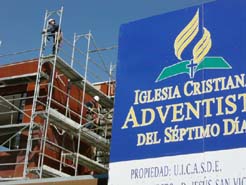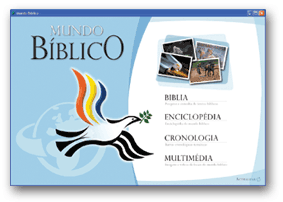Seventh-day Adventists in Madrid recently approached municipal authorities to establish a multi-faceted community project, which includes a church, a school and a community center in the Eastern part of the country's capital.
"We asked for a piece of land to build a church project that would help integrate the immigrant groups which we are currently experiencing in our church," said Alberto Guaita, president of the Seventh-day Adventist Church in Spain. "We received not only a warm welcome for such an initiative, but they approached the request in a generous and practical way by donating a piece of land worth 13 million euros" (approximately U.S. $17.4 million). From then on, Guaita said, the church embarked on a challenging journey to make the project happen.
A visitor to the building site recognizes the project instantly as being a Christian institution. A ten-meter high cross can be seen from afar among the high-density apartment buildings in a suburb predominantly occupied by the city's immigrant populations.
"It will be a school for 320 students, ranging from kindergarten to high school level. Yes, it will be a school operated by our church with all the aspects of Adventist education, but the difference will be that 80 percent of the students will be recruited from among the immigrant population. It will serve as an example how to integrate," Guaita explained. "The state will assist us in the running operation of the school, including salaries for the faculty, purchases of the equipment, and furniture," he added.
"Our churches have already developed a sense of pride in this new venture and I believe that they will support with their resources to complete and pay for the building. As a denomination, we are also partially solving a big problem of providing a home for our growing congregations. This church sanctuary will house a congregation of 600, and included in the project are two parish apartments," Guaita continued.
According to church sources, Adventist churches in Madrid swelled in recent years by 4,000 immigrants from Romania. "Today in Spain we are no longer as we used to be. We are an international church in Spain," Guaita stated. The church in Spain has also opened its doors to immigrants from South and Central America, as well as from various Eastern European countries.
Pastor Jan Paulsen, president of the Adventist world church, visited the site on March 11 during his three-day visit to Madrid. The project is a "wonderful statement from the government toward the church to become a model of integration for those who have come to your country," Paulsen said.
"I am very impressed," he said during an inspection of the site. "It will be difficult to see such [a high] quality project anywhere in the world," he added.
The architecture and design of the interior speak of a well-thought-out plan. But according to Guaita, the center is only "built within the expected construction norms established by the government. There is nothing extravagant here. These are Spanish norms."
Europe's issues with immigration are exemplified by what the Adventist Church is faces. "We welcome every one with open arms, but not everything in relationships can be solved instantly. Cultural adjustments take time. Customs vary, styles of worship vary, but we live in the church together and [are] making an effort to recognize both diversity and unity," Guaita explained.
Commenting on the Spanish immigrant integration efforts from a perspective of a common challenge for many other European countries, Pastor Ulrich Frikart, president of the Euro-Africa church region, who visited the project, said that "politically speaking, we see an affirmation of nationalisms in Europe. Development of the church goes in other directions. We cannot see ourselves as clearly defined national entities anymore.
"The trend to integrate immigrants into the society must be different in the church," he continued. "And we have to be very open to welcome these new members. Yes, it is a challenge, but also an opportunity for enrichment of our church life and witness."
Frikart also believes that for many "church leaders and for the young generation there is no problem. What is needed is that we welcome everybody and become sensitive to the needs of those who join us." Looking at some practical approaches in the integration processes, Frikart sees pastors of these new communities becoming integrated into respective local church boards. "A day will come when the immigrant members of the church will become so numerous that they will become a part of the church leadership."
The Madrid project is expected to be completed in July and ready for the new school year. "We are still seeking resources to satisfy the budget demands, but we hope that the generosity of the church will see us through." said one of the church leaders. The church in Spain operates four schools throughout the country, including a college, Collegio Adventisto de Sagunto, with more than 1,000 students. [Editor: Ray Dabrowski for ANN/APD]


